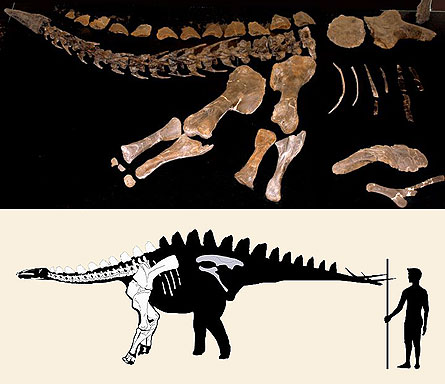Paleontologists have unearthed the fossils of a stegosaur unlike any previously discovered — one that would have had a long neck like a sauropod in addition to stegosaurs’ trademark dorsal plates and tail spikes.

One early stegosaur in the genus Huayangosaurus, which first appeared in the fossil record around 170 million years ago, had only nine neck vertebrae, says Octávio Mateus, a vertebrate paleontologist at the New University of Lisbon in Portugal. Creatures in the namesake genus Stegosaurus, which lived about 150 million years ago, had either 12 or 13 cervical vertebrae, the largest tallies previously known for stegosaurs, he notes.
But the newly discovered species — Miragaia longicollum, the “long-necked creature from Miragaia,” the village in Portugal where it was discovered — had a whopping 17 neck vertebrae, Mateus and his colleagues report online February 24 in the Proceedings of the Royal Society B. The neck, at a length between 1.5 and 1.8 meters, is around 30 percent of the creature’s 5.5-meter body length. Proportionally the dinosaur’s neck is about twice as long of those of its stegosaur kin and calls to mind the lengthy necks of sauropods.
“The new fossils reveal a range of variation in anatomy [in stegosaurs] that we had no idea about,” says Richard Butler, a paleontologist at the Natural History Museum in London.






